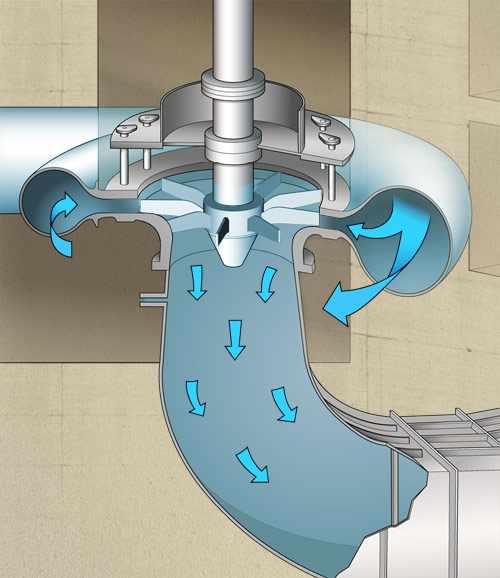
While the water travels around the external circumference of the runner the fluid is drawn inwards through openings in the structure. On its own this would cause the flow of the water to steadily decrease if the width of the pipe was uniform. But the engineers know that fluids increase their velocity when traveling along a narrowing pipe. This is why a petrol funnel does not overflow when you are filling up your lawnmower. The flow rate increases as the funnel narrows - helping to avoid an overflow when you are pouring in the fuel. In the case of the Pump Turbine the narrowing diameter is a counterbalance to the influence of the runner.
The water enters the runner radially (along all parts of the circumference) but it exits the runner axially as it free falls vertically away from the runner. The guide vanes are moveable, and within the turbine they are used to control the rate of flow which in turn controls the electrical output of the station. The station does not have to operate at full capacity every time the intake gate is opened.


